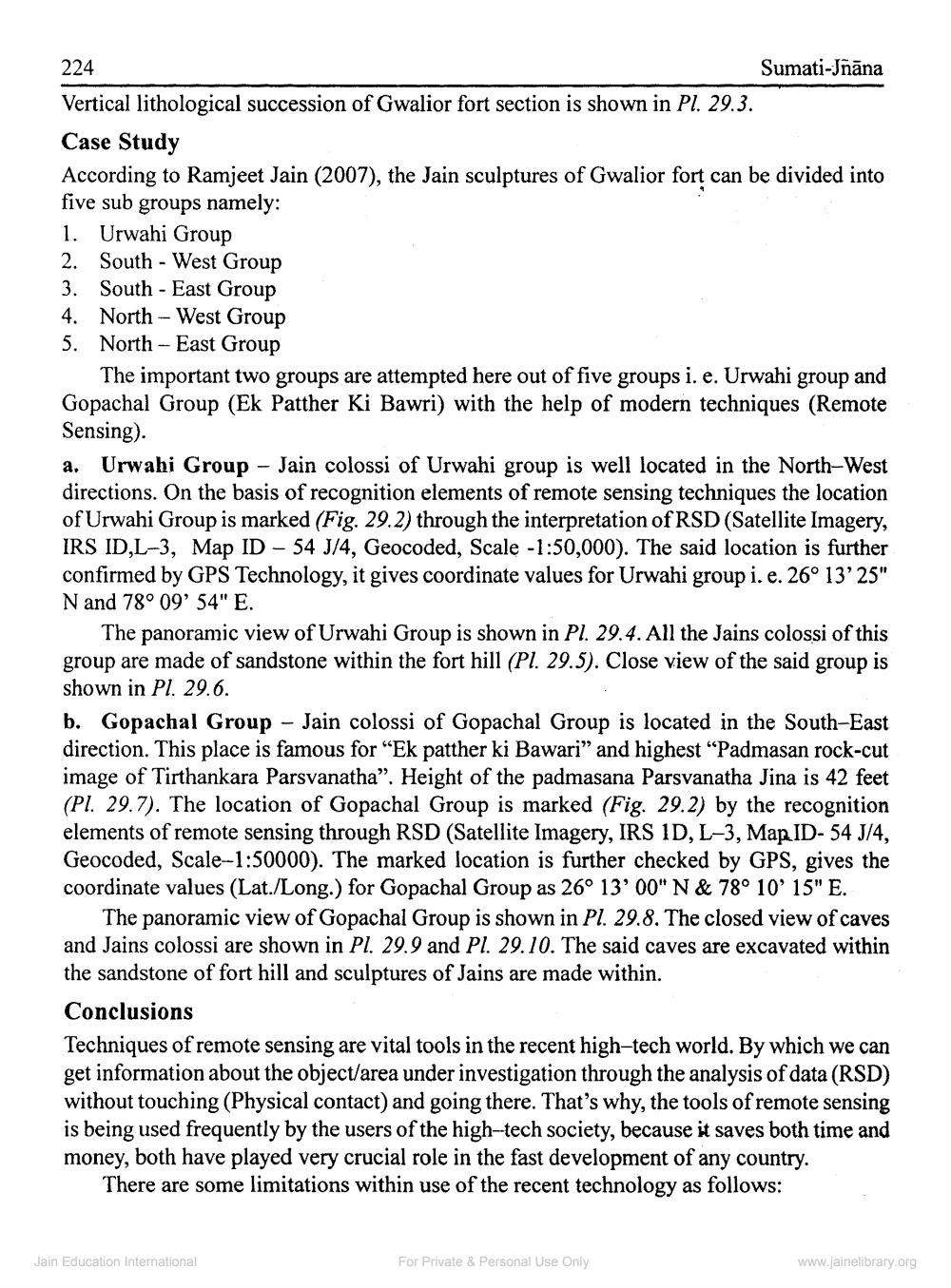________________
224
Sumati-Jñāna Vertical lithological succession of Gwalior fort section is shown in Pl. 29.3. Case Study According to Ramjeet Jain (2007), the Jain sculptures of Gwalior fort can be divided into five sub groups namely: 1. Urwahi Group 2. South-West Group 3. South-East Group 4. North-West Group 5. North-East Group
The important two groups are attempted here out of five groups i. e. Urwahi group and Gopachal Group (Ek Patther Ki Bawri) with the help of modern techniques (Remote Sensing). a. Urwahi Group - Jain colossi of Urwahi group is well located in the North-West directions. On the basis of recognition elements of remote sensing techniques the location of Urwahi Group is marked (Fig. 29.2) through the interpretation of RSD (Satellite Imagery, IRS ID,L-3, Map ID - 54 J/4, Geocoded, Scale -1:50,000). The said location is further confirmed by GPS Technology, it gives coordinate values for Urwahi group i. e. 26° 13'25" N and 78° 09' 54" E.
The panoramic view of Urwahi Group is shown in Pl. 29.4. All the Jains colossi of this group are made of sandstone within the fort hill (Pl. 29.5). Close view of the said group is shown in Pl. 29.6. b. Gopachal Group - Jain colossi of Gopachal Group is located in the South-East direction. This place is famous for “Ek patther ki Bawari” and highest “Padmasan rock-cut image of Tirthankara Parsvanatha”. Height of the padmasana Parsvanatha Jina is 42 feet (Pl. 29.7). The location of Gopachal Group is marked (Fig. 29.2) by the recognition elements of remote sensing through RSD (Satellite Imagery, IRS ID, L-3, Map ID-54 J/4, Geocoded, Scale--1:50000). The marked location is further checked by GPS, gives the coordinate values (Lat./Long.) for Gopachal Group as 26° 13'00" N & 78° 10' 15" E.
The panoramic view of Gopachal Group is shown in Pl. 29.8. The closed view of caves and Jains colossi are shown in Pl. 29.9 and Pl. 29.10. The said caves are excavated within the sandstone of fort hill and sculptures of Jains are made within. Conclusions Techniques of remote sensing are vital tools in the recent high-tech world. By which we can get information about the object/area under investigation through the analysis of data (RSD) without touching (Physical contact) and going there. That's why, the tools of remote sensing is being used frequently by the users of the high-tech society, because it saves both time and money, both have played very crucial role in the fast development of any country.
There are some limitations within use of the recent technology as follows:
Jain Education International
For Private & Personal Use Only
www.jainelibrary.org




